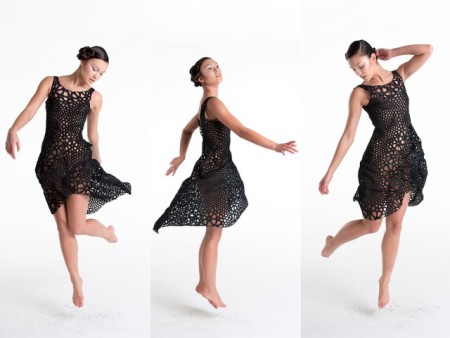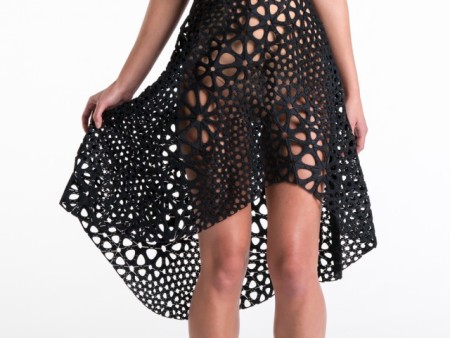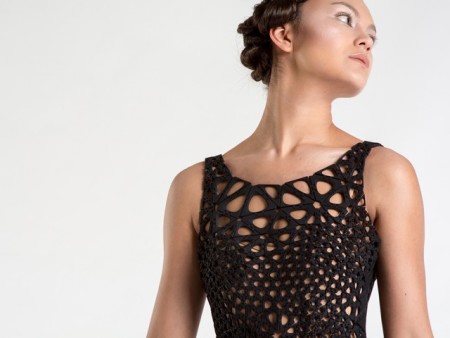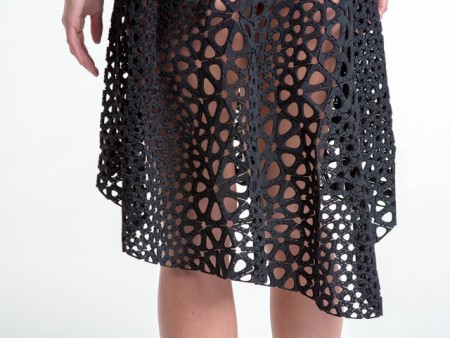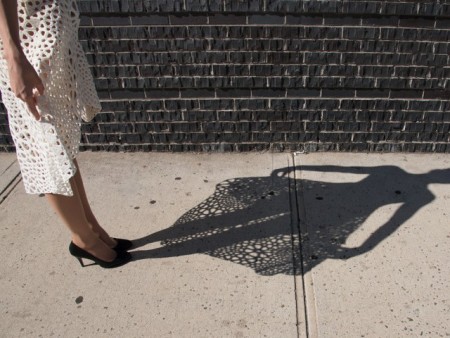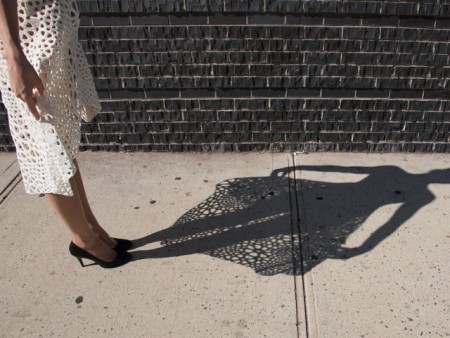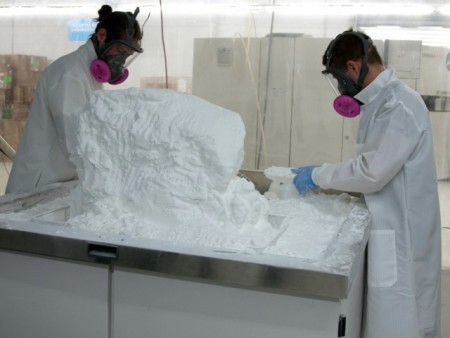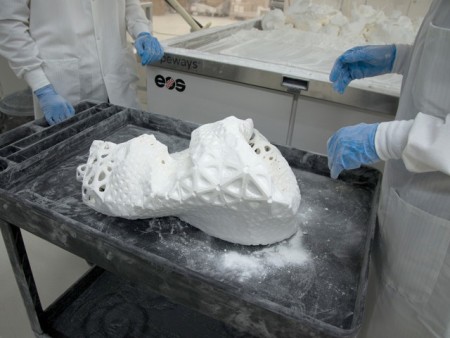22\12\2014
Written by Daan Rombaut
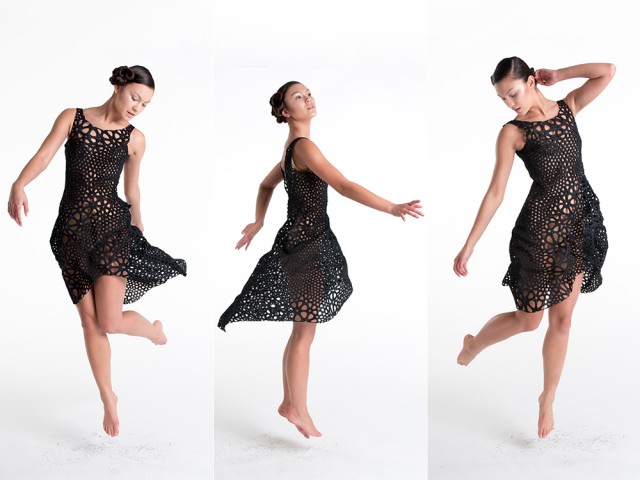
This 3D printed dress by Nervous System moves like real fabric
Design studio Nervous System, founded in 2007 and located in Somerville, Massachussets, is a generative design studio that works at the intersection of science, art, and technology. Drawing inspiration from natural phenomena, they create computer simulations to generate designs and use digital fabrication to realize products. Their latest product is a novel process that allows for 3D printed garments to move and sway like naturally sourced fabrics. The software behind it is called Kinematics and applies origami techniques to 3D printing to push the limits of the technology.
The Museum of Modern Art has acquired the dress – along with the software that Nervous System created – for their permanent collection. Composed of thousands of unique interlocking components, the dress was 3D printed as a single folded piece at the Shapeways factory in New York City and required no assembly. The Kinematics Dress represents a new approach to manufacturing which tightly integrates design, simulation, and digital fabrication to create complex, customized products.
Bodies are 3-dimensional but clothing is traditionally made from flat material that is cut and painstakingly pieced together. In contrast, Kinematics garments are created in 3D, directly from body scans and require absolutely no assembly. Nervous System employs a smart folding strategy to compress Kinematics garments into a smaller form for efficient fabrication. By folding the garments prior to printing them, it’s possible to make complex structures larger than a 3D printer that unfold into their intended shape automatically.
The custom-fit dress is an intricately patterned structure of 2,279 unique triangular panels interconnected by 3,316 hinges, all 3D printed as a single piece in nylon. While each component is rigid, in aggregate, they behave as a continuous fabric allowing the dress to flexibly conform and fluidly flow in response to body movement. Unlike traditional fabric, this textile is not uniform; it varies in rigidity, drape, flex, porosity and pattern through space. The entire piece is customizable, from fit and style to flexibility and pattern.

